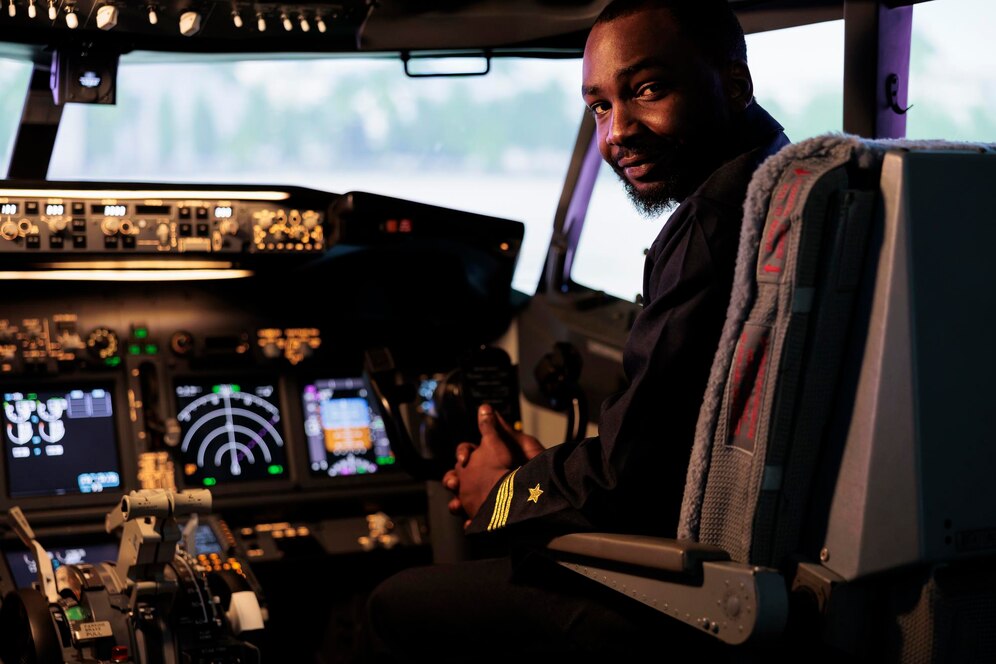Dreaming of taking to the skies and navigating the vast expanse of the heavens? Becoming a pilot offers an exhilarating and rewarding career path that allows individuals to explore the world from a unique perspective. In Namibia, aspiring pilots have access to reputable flight training programs and aviation facilities that pave the way for a successful career in aviation. In this blog post, we’ll provide a comprehensive guide on how to become a pilot in Namibia, outlining the necessary steps and considerations for embarking on this thrilling journey.
Step 1: Research and Self-Assessment
Before pursuing a career as a pilot, take the time to research the aviation industry, understand the different types of pilot licenses and ratings, and assess your aptitude and passion for flying. Consider factors such as commitment, dedication, physical fitness, and willingness to undergo rigorous training and continuous learning.
Step 2: Obtain the Required Educational Qualifications
While a university degree is not mandatory to become a pilot in Namibia, having a strong educational background in subjects such as mathematics, physics, and English can be beneficial. Many aspiring pilots choose to enroll in aviation-related courses or pursue a diploma or degree in aviation studies to gain foundational knowledge and skills relevant to the profession.
Step 3: Choose a Reputable Flight School or Training Program
Selecting the right flight school or training program is crucial to laying a solid foundation for your pilot training journey. Look for flight schools accredited by aviation authorities such as the Namibia Civil Aviation Authority (NCAA) and consider factors such as curriculum, instructor qualifications, training aircraft, safety record, and reputation within the aviation community.
Step 4: Complete Flight Training and Obtain Licenses/Ratings
Once enrolled in a flight training program, you’ll undergo a structured curriculum that includes ground school instruction, flight simulator sessions, and hands-on flight training with certified flight instructors. The training process typically progresses through various stages, culminating in the acquisition of pilot licenses and ratings, such as:
– Private Pilot License (PPL)
– Commercial Pilot License (CPL)
– Airline Transport Pilot License (ATPL)
– Instrument Rating (IR)
– Multi-Engine Rating (ME)
Step 5: Gain Experience and Build Flight Hours
After obtaining your pilot licenses and ratings, focus on gaining flying experience and accumulating flight hours to enhance your skills and qualifications. Consider opportunities such as flight instructor positions, aerial surveying, charter flying, or corporate aviation to gain valuable experience and progress towards higher-level certifications and career advancement opportunities.
Step 6: Maintain Currency and Continuously Upgrade Skills
As a pilot, staying current with regulatory requirements, undergoing recurrent training, and continuously upgrading your skills are essential for maintaining safety, proficiency, and professionalism in the cockpit. Stay informed about industry trends, technological advancements, and best practices in aviation to remain competitive and adaptable in a dynamic and evolving industry.
Becoming a pilot in Namibia is an exciting and rewarding journey that requires dedication, perseverance, and a passion for aviation. By following the steps outlined in this guide and seeking guidance from experienced pilots and aviation professionals, you can embark on a fulfilling career in the skies and experience the thrill of flight firsthand. Whether you aspire to fly for pleasure, pursue a career in commercial aviation, or explore specialized fields such as bush flying or aerobatics, the sky’s the limit when it comes to achieving your aviation dreams in Namibia.
